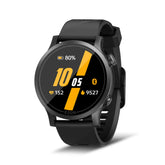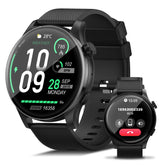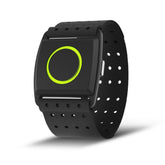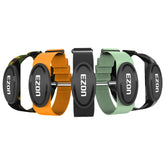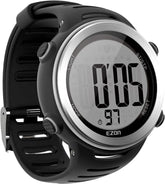Cycling Training Plans: From Casual Rides to Competitive Racing
Whether you’re pedaling for pleasure or chasing podiums, a structured cycling training plan can transform your performance, build endurance, and sharpen race-specific skills. In this guide, we’ll explore tailored plans for casual riders, intermediate enthusiasts, and competitive racers, with a focus on interval training, endurance rides, and essential gear like GPS cycling watch to track progress.
1. Casual Riding: Build Fitness and Enjoyment
Perfect for riders who love cycling as a hobby or commuting tool.
Training Focus:
- Consistency Over Intensity: Aim for 3–4 rides/week to build a base without burnout.
- Mixed Terrain: Combine road rides, gravel adventures, and occasional spin classes for variety.
Weekly Plan (4–6 Hours):
- Monday: Easy Spin (45–60 minutes, Zone 2–3, 60–70% FTP)
- Wednesday: Group Ride (Social pace, 90 minutes, focus on cadence 80–90 RPM)
- Saturday: Scenic Long Ride (2–3 hours, Zone 2, explore new routes)
- Sunday: Rest or Core Work (Planks, glute bridges to improve pedaling efficiency)
Gear Tip:
A GPS cycling watch like EZON’s GPS Series helps track distance, average speed, and elevation gain, turning casual rides into measurable progress.
2. Intermediate Training: Boost Speed and Stamina
For riders ready to tackle century rides or local races.
Training Focus:
- Threshold Training: Improve FTP (Functional Threshold Power), the maximum power you can sustain for 1 hour.
- Structured Intervals: Short bursts of high effort to increase anaerobic capacity.
Weekly Plan (6–9 Hours):
- Tuesday: Sweet Spot Intervals (3x20 minutes at 88–94% FTP, 5-minute recovery)
- Thursday: Tempo Ride (45 minutes at 75–85% FTP, simulate race-pace effort)
- Saturday: Long Endurance Ride (4–5 hours, Zone 2, practice fueling/hydration)
- Sunday: Skills Session (Cornering drills, group riding etiquette)
Key Workout: Tabata Intervals
- 20 seconds all-out effort (120+ RPM), 10 seconds rest, 8 rounds = 4 minutes total.
- Benefits: Boosts VO2 max and improves leg speed for sprints.
3. Competitive Racing: Peak Performance and Race Simulation
For athletes targeting crit races, time trials, or stage races.
Training Focus:
- Race-Specific Intensity: Mimic race demands (e.g., repeated accelerations for crits, steady power for time trials).
- Recovery: Prioritize rest to avoid overtraining before key events.
Weekly Plan (9–12 Hours, 6–8 Weeks Out from Race):
- Tuesday: High-Intensity Intervals (6x3 minutes at 105–110% FTP, 3-minute recovery)
- Thursday: Race Simulation (2 hours with 10x1-minute surges at 120% FTP, 2-minute recovery between surges)
- Saturday: Long Ride with Race Pace Segments (3 hours, last 30 minutes at goal race pace)
- Sunday: Active Recovery (Yoga or easy spin to flush lactic acid)
Power Training Tip:
Use a power meter or GPS cycling watch to monitor watts/kg, a key metric for climbing and time trials.
Core Training Methods for All Levels
1. Interval Training: The Efficiency Booster
- Short Intervals (1–3 minutes): Improve neuromuscular coordination and leg speed (e.g., 10x1-minute sprints at 120% FTP).
- Long Intervals (5–20 minutes): Raise FTP and sustainable race pace (e.g., 4x8 minutes at 90% FTP).
- Tool: EZON’s GPS watch offers interval presets, vibrating alerts to stay on pace during workouts.
2. Endurance Rides: The Foundation of Fitness
- Zone 2 Riding (60–70% FTP): 2–6 hours weekly to build aerobic capacity and fat oxidation.
- Pro Tip: Use a GPS cycling watch to map routes with varied terrain (hills, flats) for balanced endurance.
3. Skills Training: Master the Basics
- Cadence Control: Aim for 85–95 RPM to reduce knee strain; use a watch to track real-time cadence.
- Bike Handling: Practice sharp turns and obstacle avoidance in a safe, open area.
Gear Essentials for Effective Training
1. GPS Cycling Watch: Your Portable Coach
-
Key Features:
- Multi-GNSS Navigation: GPS, GLONASS, Galileo for precise route tracking, even in dense forests or urban canyons.
- Battery Life: 40+ hours in GPS mode for multi-day tours or 12-hour endurance races.
- Data Syncing: Export to Strava/TrainingPeaks to analyze power, heart rate, and speed over time.
2. Indoor Training Tools
- Turbo Trainer: Ride indoors during bad weather, paired with apps like Zwift for virtual group rides.
- Heart Rate Monitor: Use a chest strap or wrist-based sensor to ensure interval efforts hit target zones.
3. Comfort and Performance Gear
- Aerodynamic Helmet: Reduce drag in time trials (e.g., KASK Protone).
- Clipless Pedals: Improve power transfer—start with SPD pedals for easy clipless transitions.
Recovery and Nutrition for Sustained Progress
1. Recovery Strategies
- Active Recovery: Easy spins at Zone 1 (50–60% FTP) to boost blood flow without fatigue.
- Sleep Prioritization: 7–9 hours/night to aid muscle repair; use a watch to track deep sleep stages.
2. Nutrition for Fuel and Recovery
- During Rides: 30–60g carbs/hour (gels, sports drinks) and 500–750ml fluids/hour.
- Post-Ride: 20–30g protein + 50g carbs within 60 minutes (e.g., chocolate milk + oatmeal).
Race Day Prep: Final Tweaks for Success
1. Taper Period (1–2 Weeks Out)
- Reduce Volume by 30%: Keep intensity high but cut mileage to preserve freshness.
- Test Gear and Nutrition: Use a practice race to ensure your GPS cycling watch, shoes, and fueling plan work seamlessly.
2. Race Morning Routine
- Warm-Up: 30 minutes of easy spinning with 5x10-second sprints to wake up legs.
- Pacing Strategy: Start 保守,use your watch’s pace alerts to avoid surging in the first km.
Train Smarter with EZON’s Cycling Gear
- Real-Time Data: Instant access to speed, cadence, and heart rate without taking your hands off the bars.
- Durability: 10ATM water resistance and shock-proof casing for all-weather rides.
- Customizable Workouts: Preload interval sessions or create your own via the companion app.
From Rides to Races: Your Cycling Journey Starts Here
Whether you’re pedaling for fun or aiming for the podium, a well-structured cycling training plan paired with the right gear like a GPS cycling watch will elevate your performance. Start with your current fitness level, focus on progressive overload, and let data from your watch guide adjustments.
Remember, every pedal stroke is a step toward your goal—whether that’s a personal best on your favorite climb or a trophy on the podium. Gear up, train intentionally, and let the road ahead be your canvas for growth.
